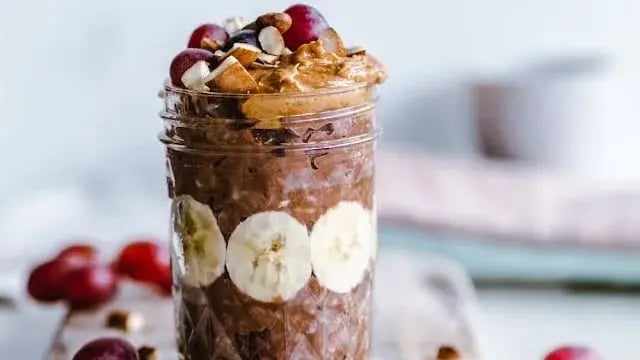- Calorie-conscious
- Awareness of food groups
- Homemade food
- Foods to prepare in advance
Meal planning is not an easy task. With their respective busy professional and personal lives, few adults are sorted enough to plan or prepare their meals in advance. Children too are very busy with their school and tuition work to spare much for learning these essential healthy habits, except on holidays and weekends.
And since most meals focus on preparing and serving fresh, it becomes difficult for children and adults to inculcate healthy eating habits in life. Healthy eating habits typically comprise all the characteristics of meal planning and more. Here is a quick guide on meal planning for the development of healthy eating habits.
How To Do Meal Planning for Kids?
1. Calorie-conscious

Calories play a big role in meal planning, as sooner or later, once the risk of chronic health conditions, such as obesity, diabetes, hypertension, and high cholesterol, increases for your family, you will be forced to count calories to ensure you do not go over the limit consecutively. Adult women should consume 2000 calories daily, based on a moderately active lifestyle, to maintain their weight and eat less than 1500 calories if they wish to lose a pound of weight a week, while men should consume 2500 calories to maintain their weight and 2000 calories to lose a pound a week. Kids aged 9 and above must consume 35 to 45 Cal/kg/day. Maintaining this will lessen the risk of chronic diseases as well as improve growth.
2. Awareness of food groups
Awareness of food groups and portion control regarding the same is important. One gram of carbohydrate gives four kilocalories of energy. Therefore, it is advised to consume 50% of the daily calorie intake from natural unsaturated carbs like whole grains, fruits, vegetables, and legumes. As for protein, a gram of it provides four kilocalories of energy, the same as carbs. Proteins should comprise around 25 to 30% of the daily calorie intake from sources like lean meat, eggs, poultry, dairy, nuts, seeds, and some whole grains.
A gram of fat offers nine kilocalories of energy, the highest among all. Therefore, it is advised to make around 15 to 25% of their daily energy consumption from rich sources like fatty fish and meat, nuts, seeds, dairy, and certain fruits. It is also advised to make one-half of your plate full of fruits and vegetables, with the other half for proteins and whole grain carbs. Once you understand the portion control and type of foods that should comprise your diet, according to food groups, healthy meal planning becomes very easy.
3. Homemade food
Planning meals in a healthy manner is possible only at home, not from food deliveries. Begin small. Try to plan your meals for the next day, according to your kitchen supplies, or make a menu that appears easy and doable according to professional and personal engagements, and then go grocery and produce shopping. It is best to prepare the ingredients or even the dishes in advance and store them up. This way, you do not have to cook often during the week and get to have nutritious and tasty homemade food for the entire family. Try and cut down on fast food as they will only deter the formation of healthy eating habits.
4. Foods to prepare in advance
Since it is ideal to prepare food in advance, here are a few quick food ideas that promote meal planning for healthy eating habits.
Overnight Oats

Make a luscious batch of dark chocolate overnight oats in advance and watch your kids’ faces light up as they spoon the delicious goodness early in the morning before a hot day at school. Combine rolled oats, chia seeds, cocoa powder, and dark chocolate chips in a bowl. Add milk, vegan yogurt, honey, vanilla essence, and salt to the dry mix and combine till everything is well mixed and thick. Store in airtight containers in the freezer for a week and serve garnished with fresh fruits, chocolate chips, and nut butter.
Cheesy Masala Pasta

For a simple yet decadent cheesy masala pasta made at home, use whole milk, water, pasta, cheddar cubes, shredded mozzarella and parmesan cheese, salt, pepper, and smoked paprika. In a pot combine milk, water, and pasta, and bring it to a boil. Simmer on low till pasta is tender and almost all cooking liquid has been absorbed, for almost 12 to 15 minutes. Reduce heat and slowly add cheese in batches, stirring consistently, till all the cheese has melted. Season with salt, pepper, and smoked paprika before turning off the heat. You can freeze this meal for up to two months and only heat it in a preheated oven for 20 to 25 minutes to get it as good as new, any day of the week.
Kaushiki Gangully is a content writing specialist with a passion for children's nutrition, education, and well-being. With more than five years of writing experience and a science-based background, she provides nuanced insights to help families raise happy, healthy kids. Kaushiki believes in making learning and healthy eating fun, empowering parents with practical, easy advice.
The views expressed are that of the expert alone.
The information provided in this content is for informational purposes only and should not be considered a substitute for professional medical advice, diagnosis, or treatment. Always seek the advice of your physician or another qualified healthcare provider before making any significant changes to your diet, exercise, or medication routines.
References
https://www.nin.res.in/rdabook/brief_note.pdf
https://www.nin.res.in/downloads/DietaryGuidelinesforNINwebsite.pdf
https://www.nin.res.in/RDA_Full_Report_2024.html
https://www.ijfcm.org/html-article/18750
https://iapindia.org/pdf/Ch-044-Nutrition-5-12-y-IAP-Parental-Guidelines-28112021.pdf
















